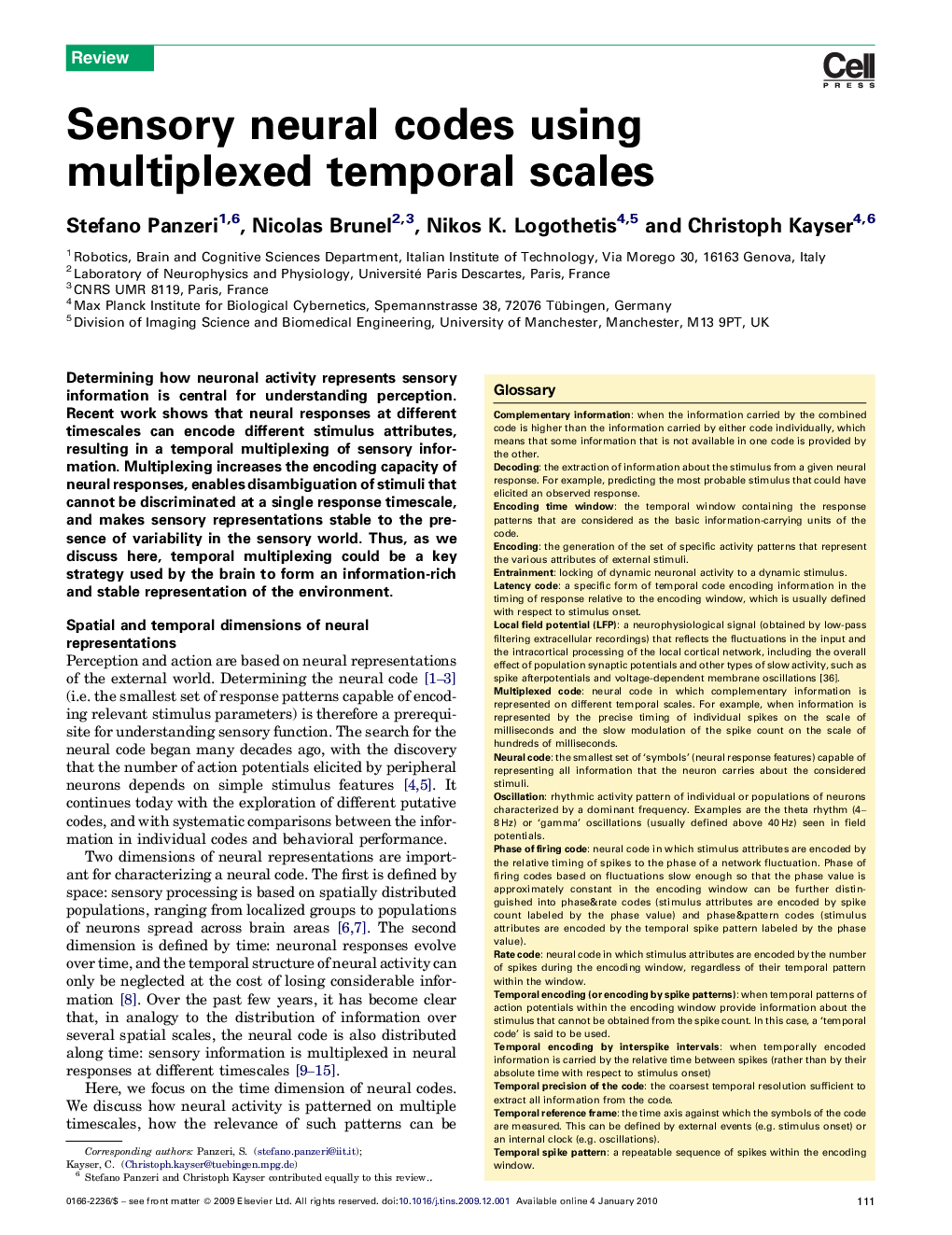| Article ID | Journal | Published Year | Pages | File Type |
|---|---|---|---|---|
| 4354538 | Trends in Neurosciences | 2010 | 10 Pages |
Abstract
Determining how neuronal activity represents sensory information is central for understanding perception. Recent work shows that neural responses at different timescales can encode different stimulus attributes, resulting in a temporal multiplexing of sensory information. Multiplexing increases the encoding capacity of neural responses, enables disambiguation of stimuli that cannot be discriminated at a single response timescale, and makes sensory representations stable to the presence of variability in the sensory world. Thus, as we discuss here, temporal multiplexing could be a key strategy used by the brain to form an information-rich and stable representation of the environment.
Related Topics
Life Sciences
Neuroscience
Neuroscience (General)
Authors
Stefano Panzeri, Nicolas Brunel, Nikos K. Logothetis, Christoph Kayser,
